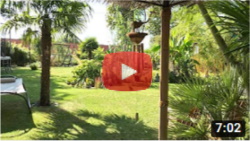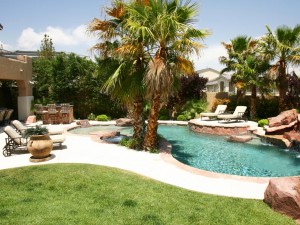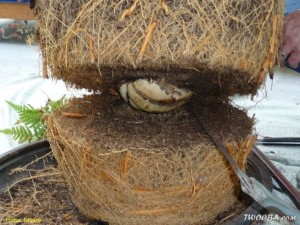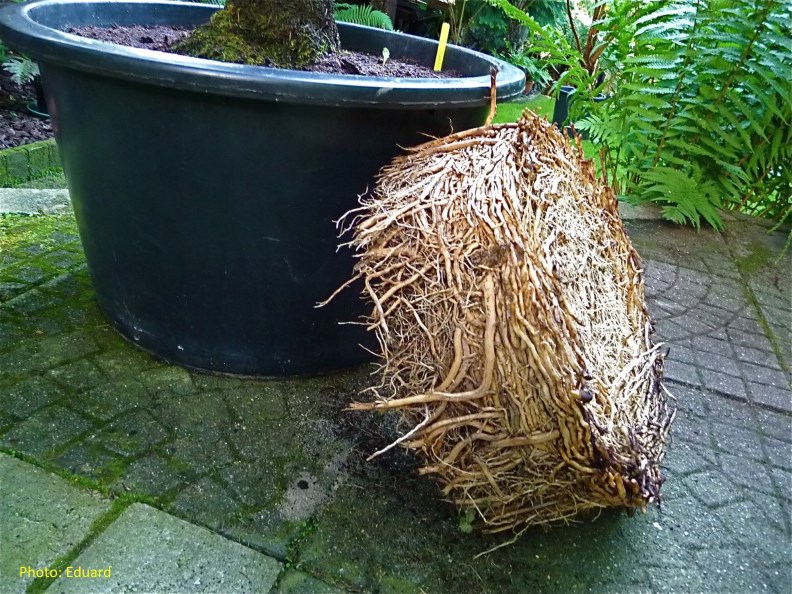 A frequently heard and justified question: can a palm be planted next to a pond or pool without risk? In this article we dive into the root system of the palm to answer this question!
A frequently heard and justified question: can a palm be planted next to a pond or pool without risk? In this article we dive into the root system of the palm to answer this question!
The root system
Palms are monocots and therefore have a different root system than a typical deciduous tree. This is reflected not only in the different approach to the planting itself, but also in the further development of the root system.
The seedling develops differently as early as germination. From the seed emerges a hyperphyll which will divide in a coleoptil (ligule) from where the first leaf emerges and a radicle which is the first real root. Afterwards, the roots develop further with special functions depending on their position and depth in the soil. We divide the root system, the rhizosphere, into 4 zones.
Zone I
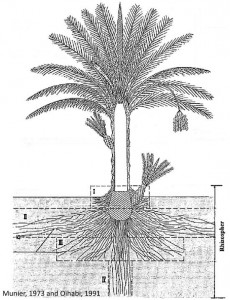
The respiratory zone. This zone is no more than about 25 cm (1 ft) deep and reaches a maximum of 50 cm (1,8 ft) from the trunk. We find here both primary and secondary geotropic roots. In other words, they are led downwards by gravity. In this zone we also the transition from stem to roots and the root tuber.
Zone II
The nutritional zone. The largest area of the rhizosphere and also containing the highest proportion of primary and secondary roots. The zone stretches between 90 and 150 cm (2 ft 11 in – 4 ft 11 in) in depth and width and reaches just a bit further in width than the palm leaves.
Zone III
The absorbing zone. The exact development of this root zone is highly dependent on the species and depth of groundwater. Normally this zone is about 150 to 180 cm (4 ft 11 in – 5 ft 11 in) deep. This zone contains mainly primary roots and the root density is significantly lower than in zone 2. Just like in zone 2, the actual absorption is also done here by the very fine root hairs.
Zone IV
The development of the last zone depends entirely on the groundwater level. In areas where the groundwater is high, there is hardly any distinction between zone 3 & 4.
Adventitious roots
Over time, we also see roots appearing above ground just at the base of the palm. These are so-called adventitious roots that originate from the stem and provide extra strength. These may also give the impression that the palm has pushed itself upwards, but in fact it is only additional roots that become visible.
Next to the pond or swimming pool?
Root pruning
Especially in the case of palm trees in tub containers, the formation of a complete root system can eventually lead to a lack of space in which the palm eventually either pushes itself out of the pot or causes the pot to break. Certain species can relatively well cope with root pruning by simply removing a piece of root ball to gain space. Think for example of species such as Phoenix, Washingtonia, Sabal,…
© La Palmeraie




